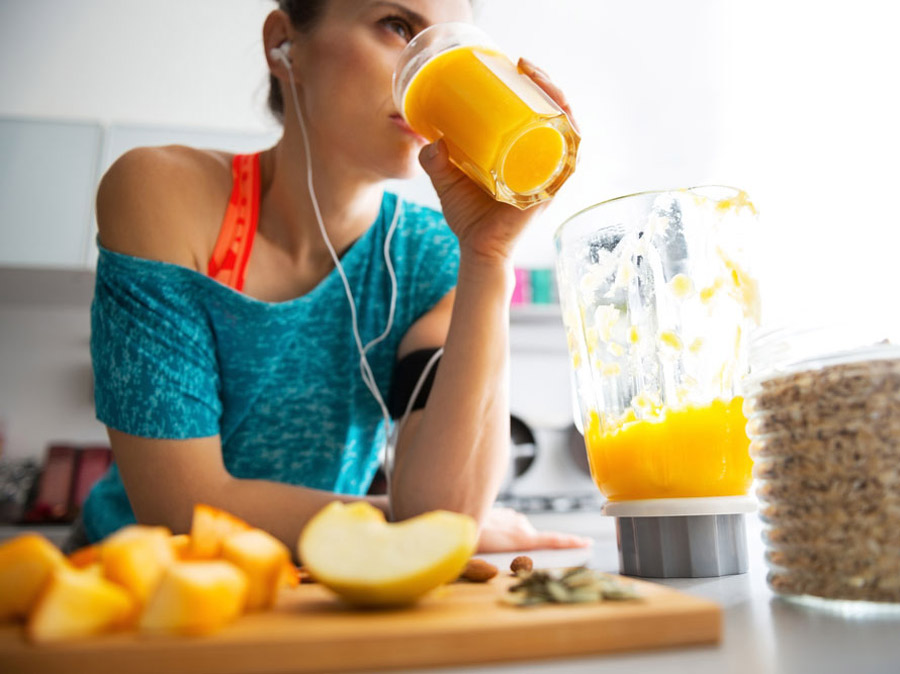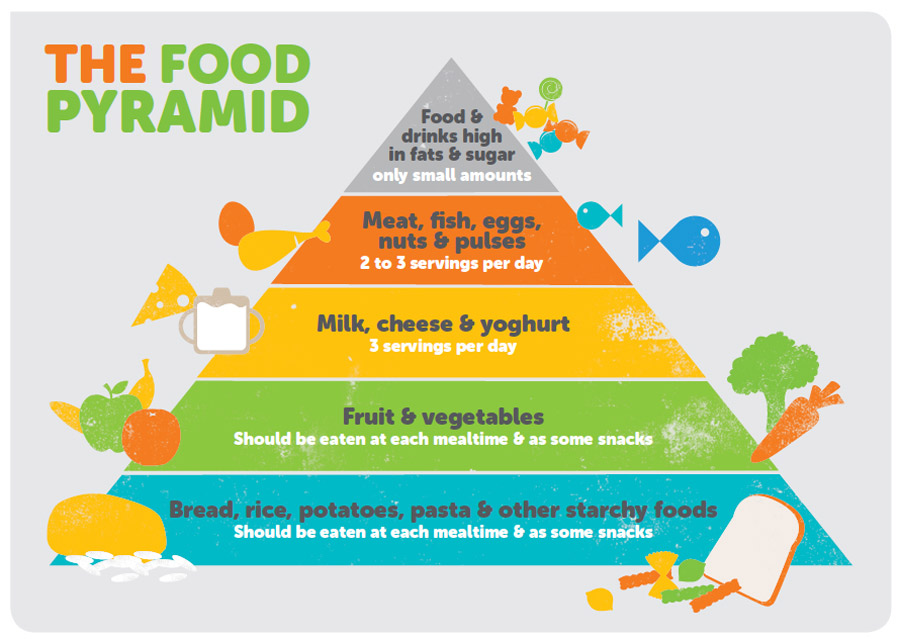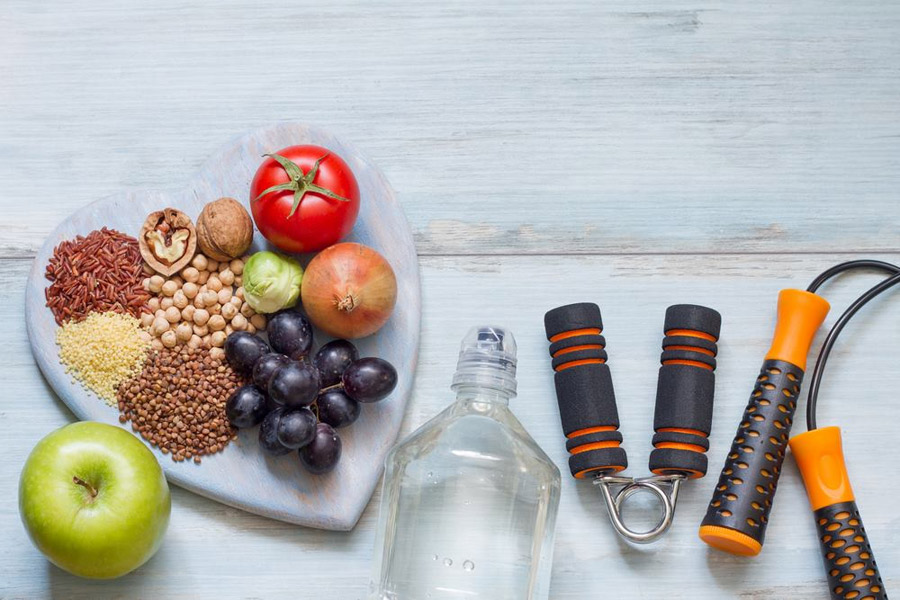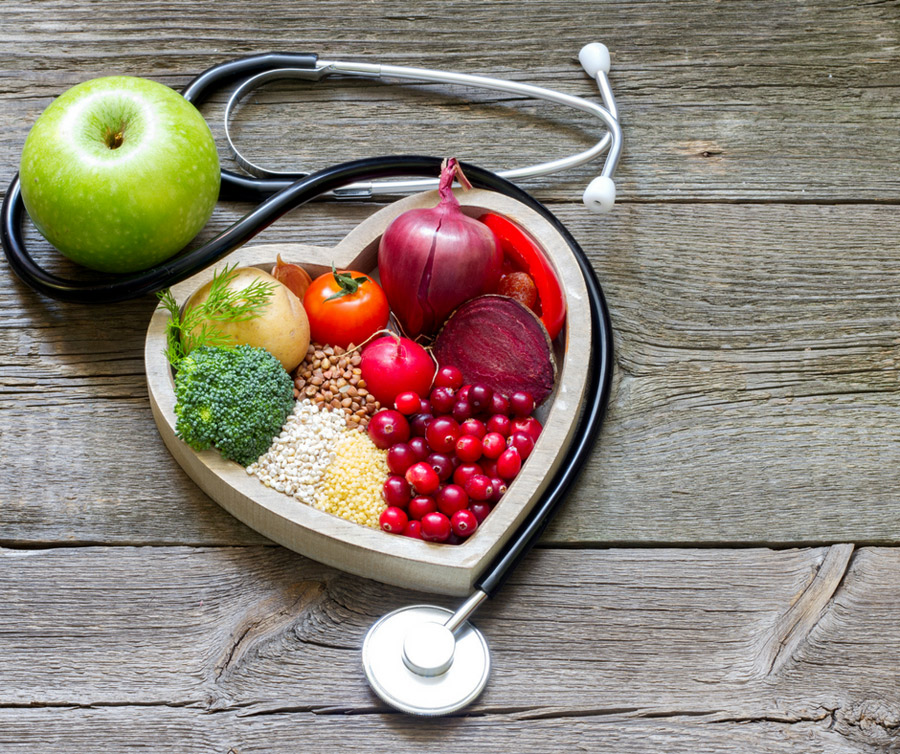Below is a list of all the very important topics we'll discuss
throughout the weight management content section.
- Introduction
- Small, Gradual Changes; An Effective Alternative
- Deprivation Doesn't Work
- Cardiovascular Exercise and Strength Training are Crucial
- Reducing Body Fat Reduces Disease Risk
- The Dangers of Excess Body Fat
- Gaining Weight Happens to Most of Us
- The Answer: Healthy Eating and Physical Fitness
- The Do's And Don'ts of Dieting Don't Do It
- More Bad News About Dieting
- We Don't Fail Diets, They Fail Us
- Healthy Choices While Eating Out
- How to Use the Daily Food Guide Pyramid
- Words To Be Watched Out In Restaurants
- Pumping down the cholesterol
- Words Indicating Low-Fat Choices
- Exercising portion control to prevent undesired weight gain
- The Ten Certainties of Successful Weight Management
- Effect of Dieting on Metabolism
- Eating Disorders Signs and Causes
- Are you at Risk for Eating Disorder
- Combating Binge Eating Disorder
- About Weight Gain During Pregnancy
- Low-Calorie Lower Fat Alternative Foods
- 150 Ways to Slim Down Your Meals
- Healthy Shopping List
- Low fat Shopping Strategies
- Understanding Labels and Health Claims
- Dinning Out
The weight management content is your on-line manual. Everything you need to know about weight management and exactly how to achieve the results you desire is taught in this manual.
Introduction

In the weight management content, you will find information on:
-
Why traditional diets are unsafe and almost
sure to fail
-
The physical risks of dieting and how
dieting changes your body composition for the worse
-
The psychological risks of dieting
-
The dangers of excess body fat
-
Why our metabolism becomes less efficient as
we age and how you can prevent this from happening
-
How reducing body fat reduces the risk of
disease
-
Common mistakes people make when trying to
decrease body fat
-
Why the Women Fitness Weight Management
program is a better way to achieve long-term optimal health
-
The ten certainties of the Women Fitness
Weight Management program can help you be successful
- Accept your body and learn to have a positive self-image
- Avoid the negative; choose the positive
- Accept change as a positive force in your life
- There's no such thing as cheating
- There are no "good" or "bad" foods
- Avoid short-term thinking: successful programs are for life
- Live your program one day at a time
- Eating should always be a pleasurable experience
- Avoid getting stuck in the weight-loss dilemma
-
Take time to measure your progress
-
How to master psychological hunger and
develop healthy eating habits
-
How to prevent automatic eating
-
The importance of eating foods that satisfy
you both physically and psychologically
-
The importance of eating slowly and
attentively
-
The importance of not depriving yourself of
the foods you love
-
The information you need about fats,
saturated fats, cholesterol, fiber, and sugar
-
Figuring out your recommended daily fat
limit
-
Healthy shopping strategies
-
How to figure out the fat percentage of a
specific food
-
What a label's health claim really means
-
How to make the meals you love healthier
-
How to decide if a food product is healthy
-
A suggested shopping list for a healthy
kitchen and for the Women
Fitness Healthy Recipes
-
Healthy, lowfat cooking and baking
strategies
-
Healthy, lowfat dining-out strategies,
including what to tell your server
-
Healthy strategies for social gatherings
-
The benefits of eating smaller, more
frequent meals
-
The best times of the day to eat and how
much
-
How to improve your eating pattern
-
How to prevent overeating
-
Healthy meal and snack ideas
-
The importance of water in weight
management
-
Guidelines for fluid replacement and
hydration
-
The role of exercise in a successful weight
management program
- Why a weight management program is three times more effective when strength training
-
and cardiovascular exercise are included
-
How to condition your body to be an
efficient "fat burner" 24 hours a day
- How to develop an exercise program that is right for you--one you'll enjoy for life
Deprivation Doesnt Work

Each time we go on another diet of deprivation, the weight becomes more difficult to lose, and we become even more frustrated and discouraged. Then we eat more and exercise less, causing ourselves more frustration, discouragement, depression. Soon we are in a vicious cycle. We begin to ask ourselves, 'Why bother'? We begin to blame ourselves for having no will power when what we really need is clear, scientifically-based information that will help us develop a healthier lifestyle we can live with for the rest of our lives.
The Weight Management component of the Women
Fitness (WF) program is not a diet program that you'll quit because it's too
difficult or because you've reached a six-month weight-loss goal. WF offers
a healthier way of eating and a happier way of living. We offer a realistic,
sensible approach to food and a more fun and more effective approach to
exercise. We teach you how to gradually adopt those new behaviors so that
they become part of an improved way of life, one without guilt, without
rules and without deprivation.
Reducing Body Fat Reduces Disease Risk

For people with a family history of heart disease, an active lifestyle can slow or stop the process for all but those with serious genetic disorders. Studies by Dean Ornate, MD, have shown that a comprehensive intervention program that includes regular physical activity, a low fat diet and a stress reduction program can even reverse the heart disease process.
Evidence also shown that an active lifestyle
and its help in reducing body fat is associated with a reduced risk for some
types of cancers: prostate for men, breast and uterine cancers for women.
In addition, regular physical activity and a low fat diet are successful in treating non-insulin dependent diabetes (NIDDM): for some patients, it has reduced or eliminated the need for insulin substitutes. In general, regularly active adults have 42 percent lower risk of developing NIDDM.
Gaining Weight Happens to Most of Us

The average women gains at least one pound a year after age 25. Think about it. If you're like most of them by the time you're 50, you're likely to gain 25 pounds of fat, or more. In addition, your metabolism is also slowing down, causing your body to work less efficiently at burning the fat it has. At the same time, if you don't exercise regularly, you lose a pound of muscle each year. Consequently, people are not only increasing their body fat stores, increasing their risk of disease, but they're also losing muscle, increasing the risk of injury, decreasing activity performance, and further s lowing down metabolism.
Very few people exercise in any significant way.
The Dos And Donts Of Dieting Dont Do It

Following that list of foods that a diet allows or forbids us is really only feasible in the short term. If we don't change our tastes and preferences so we learn to enjoy foods in fat and higher in nutritional value, we will feel more and more restricted. And eventually we will resume our former eating habits because we will have a preference for high-fat foods.
When you diet, a piece of pizza is sinful;
eating cake and ice cream makes you a bad person. A missed workout means
skipping dinner and doing hundreds of crunches. A planned dinner engagement
requires skipping breakfast and having just a piece of fruit for lunch. You
refuse a dinner party for fear of being tempted with food you haven't
"earned" or calories you haven't "saved".
The attitudes and practices acquired through
years of dieting are likely to result in a body weight and size obsession,
low self-esteem, poor nutrition and excessive or inadequate exercise. Weight
loss from following a rigid diet is usually temporary. Most diets are too
drastic to maintain; they are unrealistic and unpleasant; they are
physically and emotionally stressful. And most of us just resume our old
eating and activity patterns. Diets control us; we are not in control.
People who try to live by diet lists and rules learn little or nothing about
proper nutrition and how to enjoy their meals, physical activity, and a
healthy lifestyle. No one can realistically lives in the diet mode for the
rest of their life, depriving themselves of the true pleasures of healthy
eating and activity.
We Dont Fail Diets, They Fail Us

Decades of research have shown that diets,
both self-initiated and professionally led, are ineffective at production
long-term health and weight loss (or weight control). When your diet fails
to keep the weight off, you may say to yourself, 'If only I didn't love food
so much.... If I could just exercise more often...If I just had more will
power". The problem is not personal weakness or lack of will power.
Only 5
percent of women who go on diets are successful. Please understand that we
are not failing diets; diets are failing us.
How To Use The Daily Food Guide Pyramid ?

- What Counts As One Serving?
Breads, Cereals, Rice, and Pasta
1 Slice of bread
1/2 cup of cooked rice or pasta
1/2 cup of cooked cereal
1 Ounce of ready-to-eat cereal
Vegetables
1/2 cup of chopped raw or cooked vegetables
1 cup of leafy raw vegetables
Fruits
1 Piece of fruit or melon wedge
3/4 cup of juice
1/2 cup of canned fruit
1/4 cup of dried fruit
Milk, yogurt and cheese
1 cup of milk or yogurt
1+1/2 to 2 ounces of cheese
Meal, Poultry, Fish, Dry Beans, Egg and Nuts
2+1/2 to 3 Ounces of cooked lean meat, poultry or fish
Count 1/2 cup of cooked beans, or 1 egg, or 2 tablespoons of peanut butter
as 1 ounce of lean meat (about 1/3 serving)
Fat Oils, and Sweets
Limit calories from these, especially if you need to loss weight.
Pumping Down The Cholesterol

Keeping the right amount of
cholesterol in your blood is essential. Without cholesterol, basic bodily
functions would shut down because the natural substance is an important
component of hormones and cells. However, too much in your blood can be
dangerous to your heart, so it's important to achieve a balance.
Researchers have found that this may be as simple as throwing away the
cigarettes and making dietary and other lifestyle changes. For this month,
National Cholesterol Education Month, health experts are especially urging
Americans to exercise.
Good vs. bad cholesterol
The health community refers to bad cholesterol as low-density lipoprotein (LDL),
and the technical name for good cholesterol is high-density lipoprotein (HDL).
High levels of LDL cause arteries to become clogged and increase a person's
risk for developing heart disease. Conversely, high levels of HDL help to
remove LDL deposits from the arteries and transport circulating cholesterol
to the liver, which removes the cholesterol from the body.
Thus, HDL clearly is helpful in lowering a person's risk for heart disease.
In fact, researchers have shown that you can increase heart-disease risk
just by not having enough HDL. For maximum health benefits, increasing your
HDL and decreasing your LDL is ideal. Doctors recommend that total
cholesterol levels remain below 200 mg/dl; HDL at least 35 mg/dl; and LDL
below 100 mg/dl.
Exercise Is Key, Even Moderate Activities Such As Walking

Numerous studies have clearly demonstrated the importance of exercise for
maintaining favorable levels of cholesterol.
In a study it was observed more than 100 men and women who exercised more
than 200 minutes a week for 10 months. While their HDL levels increased by
an average of 10 percent, their LDL levels also decreased by about 10
percent.
Most recently, researchers at Grand Valley State University in Allendale,
Michigan found that moderate-intensity workouts were just as effective in
increasing HDL levels as high-intensity workouts. In the study, published in
the June issue of Archives of Physical Medicine and Rehabilitation,
researchers put 25 women on a 12-week exercise regimen of walking two miles,
three times a week. One-half of the women worked out at a moderate-intensity
pace; another group walked with higher intensity. After the 12 weeks, women
in both groups significantly increased their HDL levels, compared to their
levels at the start of the study.
Trying it at home
As the results of these and numerous other studies show, participating in
some type of aerobic exercise is important. Whether walking, running or
biking, try to exercise a minimum of three days a week for at least 30
minutes. (Exercising more frequently and for longer periods of time is
certainly better.) Remember, you can also factor in your daily physical
activity, which counts too -- walking to work instead of driving, for
example, will help to keep your cholesterol levels in balance.
In the Grand Valley study, the women in the moderate-intensity group were
walking at an intensity the fitness world refers to as 60 percent of
age-predicted maximal heart rate, which is the number of times your heart
beats in one minute. The women who walked at high intensity were walking at
80 percent. To calculate the rate at which your heart should be beating at
these intensity levels, use the following steps: Calculate the difference
between your age and 220. Then, multiply that difference by 0.60 or 0.80,
depending upon your goals. This is your maximal heart rate for an aerobic
intensity of 60 percent or 80 percent, respectively.
Don't forget the fat
As much as exercise appears to affect LDL and HDL levels, a low-fat diet
also seems to have very beneficial effects. In one study, sedentary people
either began exercising, adopted a low-fat diet, or both. By the end of the
study, LDL levels dropped in both groups but decreased even more in people
who both exercised and ate a low-fat diet.
Making exercise and a low-fat diet a permanent part of your life will
benefit your health in many ways. A healthy lifestyle will help you maintain
an ideal body weight -- which will not only positively affect your HDL
cholesterol, but also reduce your risk of developing other chronic diseases
such as arthritis, obesity and diabetes.
Exercising Portion Control to Prevent Undesired Weight Gain

A
portion size is the amount of food on your plate or more specifically, the
amount you actually consume. This can be more or less than the
serving size. Between the misguided urgings of our parents to
"clean our plates," and out-of-control restaurant meal portions setting an
unhealthy standard, it's easy to understand why so many of us chronically
overeat. If the problem is eating too much, the solution is learning
portion control. "Between 1977 and 1996, food portion sizes have
increased both inside and outside the home for all categories except pizza,"
according to the report published by the Journal of the American Medical
Association on studies conducted by the National Food Consumption Survey,
(which gave information on 1977 portion sizes) and the Continuing Survey of
Food Intake,( which gave data for 1989 and 1996).
Eating the right kind of food at the right time in healthy proportion will prevent undesired weight gain To exercise portion control try to change your eating habits so that your meals and snacks are balanced with a variety of healthy foods. Eat the foods you like to eat, but master portion control. It takes just a slight energy imbalance to cause a gradual increase in weight . Say you ate just 50 excess calories a day, that is, you ate 50 more calories than you burned during physical activity. That means five extra pounds in a year.
Tips on
exercising portion control:
WF health and fitness experts have summarized few tip to help you in exercising portion control while eating at home or eating out.
- Educate yourself by measuring out portion sizes a few times so you get accustomed to how they look on your dishes. When you're cooking at home, limit each plate to just one portion, and immediately put leftovers in a storage container. When eating out, ask your server to box half of your meal to take home.
- Eat only when you are hungry. Eating to comfort feeling of stress, fear or depression will not alleviate those emotions.
- Eat slowly, taking small bites and putting down utensils between each bite.
- Portion out food prior to eating and put the rest away (this includes snacks in front of the TV). Always try to balance high-fat foods with low-fat foods. Click here, for Low Calorie, low fat alternative foods.
- Try to figure out emotions eating trigger. Learning to deal with these emotions in a healthy way can often times be easier with the help of a family member, friend or counselor.
- Substitute walking after dinner for sedentary activities like watching television. Take your spouse, friend, or dog along with you.
- Drink water , a glass of juice or soup before and during meals.
- Never eat out of a bag or carton.
- Do get caught by phrases like, "Super-size it!" and "Get ten percent extra free," sound familiar? While you think you're following the recommended portion size, the portion size hasgot bigger! Researches indicate that when people are presented with larger portion sizes, they tend to eat more.
-
Try to keep food records- - for this
will help you in analyzing times when you committed a foully and make up
for it the next time.
- Learn to read food labels. Research shows that most people underestimate how many calories they consume each day by as much as 25 percent. And some of the confusion comes from not knowing the difference between a portion size and a serving size. To get a better picture of what's considered a standard serving, check the serving size listed on the Nutrition Facts panel of food labels. Then for a day or two use measuring cups or spoons to see how your portion compares to the standard. This way you'll know how the portions you're eating stack up against the nutrition information listed on the label.
-
Eat the foods you want, but less of
them so you don't feel deprived and tempted to binge. You can also use
visual metaphors to help you, for example, one serving of pasta is about
the size of a tennis ball and one serving of meat is about the size of a
deck of cards.
- Stop when you start to feel full. This not only avoids over eating but also that miserably full feeling.
- Pass on the fatty foods as much as possible (yes, even eggnog).
- Avoid being carried away with incentive Labels. Getting more FREE isn't always such a bargain, if the saving is at a cost of increased calories and fat.
- Add some more physical activity into your life.
- Keep yourself well informed .
-
Lay more emphasis on consumption of fruits, vegetables, whole
grains, and lentils, as they are high in fiber and antioxidants.

Remember, the first step towards healthy weight loss is to concentrate on portion control before starting, or making changes in your diet (protein, carbohydrates and fat intake) or b> exercise program. Portion size directly relates to calories. With the steady increase in food sizes, most women tend to eat more than they realize and the calories are added up. And when you're watching your weight, it's calories that count.
Low-fat plant-based foods like fruits, vegetables, whole grains, and lentils should be emphasized in diet, as they are high in fiber and antioxidants. Emerging studies are showing that low-fat dairy products high in calcium have a beneficial effect on weight control. Meat is an important source of protein, but should be treated as a side dish or condiment rather than the main ingredient.
The last word: Constant exposure and easy access to fast food, meal deals and super sizes means we can no longer count on meals that are bought or made outside the home to be wholesome, nutritious and properly sized. It does mean that we have to make a substantial effort to get back on track, and learning to recognize and control portion sizes is a crucial step. Being able to size up your meals will help you size down on calories!
How to Estimate Portion Sizes
What's a portion size? According to the American Dietetic Association, you can use the following "models" to approximate portion sizes:
- A deck of playing cards = one serving (three ounces) of meat, poultry, or fish (can also use the palm of a woman's hand or a computer mouse).
- Half a baseball = one serving (one-half cup) of fruit, vegetables, pasta, or rice (can also use a small fist).
- Your thumb = one serving (one ounce) of cheese.
- A small hand holding a tennis ball = one serving (one cup) of yogurt or chopped fresh greens.
The AICR recommends the following tips to control food portions:
When at home:
- Take time to "eyeball" the serving sizes of your favorite foods (using some of the models listed above).
- Measure out single servings onto your plates and bowls, and remember what they look like. Figure out how many servings should make up your personal portion, depending upon whether you need to lose, gain, or maintain weight.
- Avoid serving food "family style." Serve up plates with appropriate portions in the kitchen, and don't go back for seconds.
- Never eat out of the bag or carton.
When in restaurants:
- Ask for half or smaller portions. (Don't worry if it doesn't seem cost-effective; it's worth it.)
- Eyeball your appropriate portion, set the rest aside, and ask for a doggie bag right away.
- If you order dessert, share it or choose a healthier option like fruit.
Seek Dietary Guidance

If you are unsure about your personal nutrition requirements, seek the advice of a registered dietitian (RD). These professionals can create individual menus and food plans that are suited to your specific weight management and overall health goals.
Resources :
American Institute for Cancer Research
http://www.aicr.org
The USDA Food Guide Pyramid
http://www.nal.usda.gov:8001/py/pmap.htm
American Dietetic Association
http://www.eatright.org
The Food Guide Pyramid Consumer Information
Center
http://www.pueblo.gsa.gov/cic_text/food/food-pyramid/main.htm